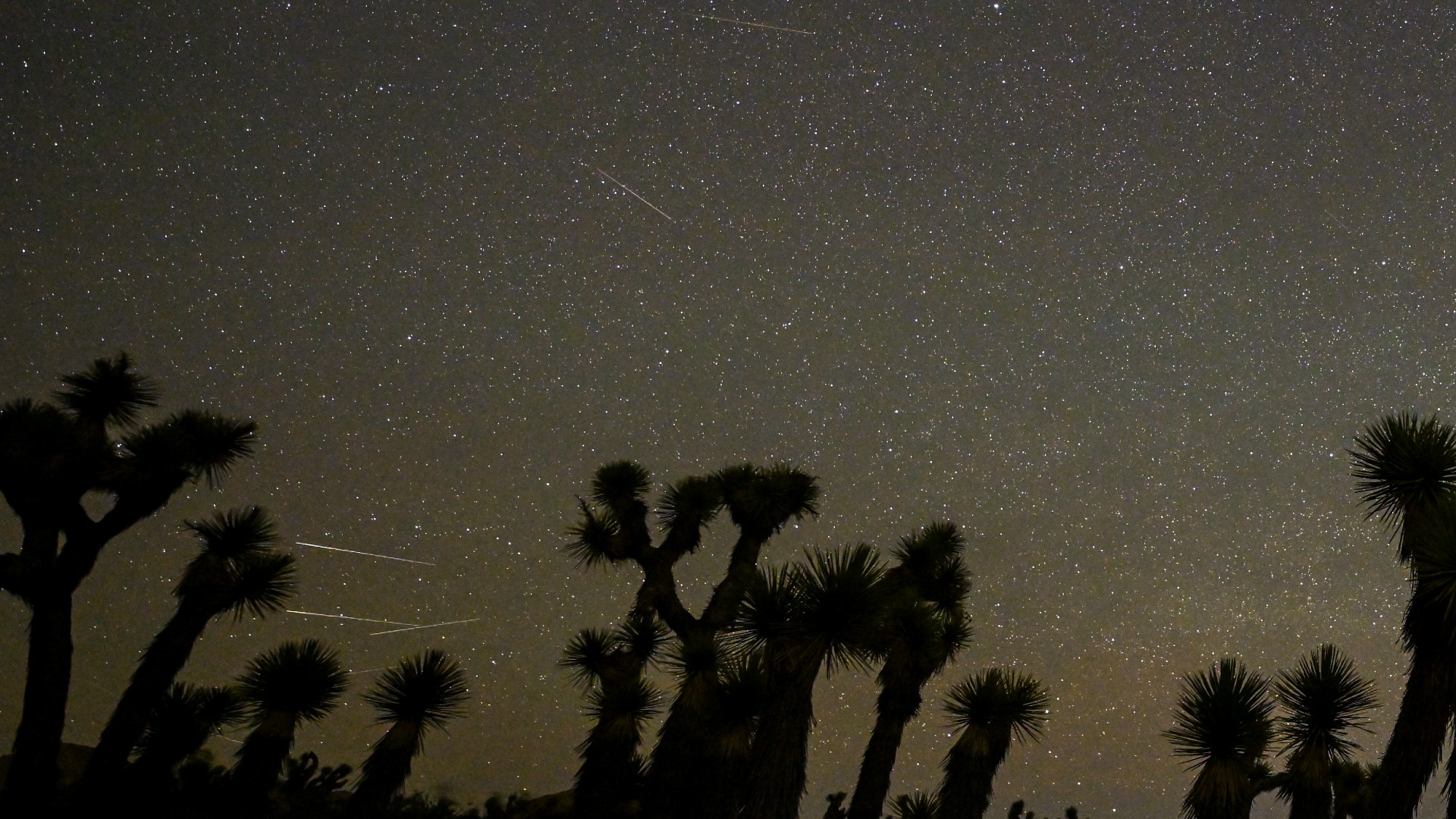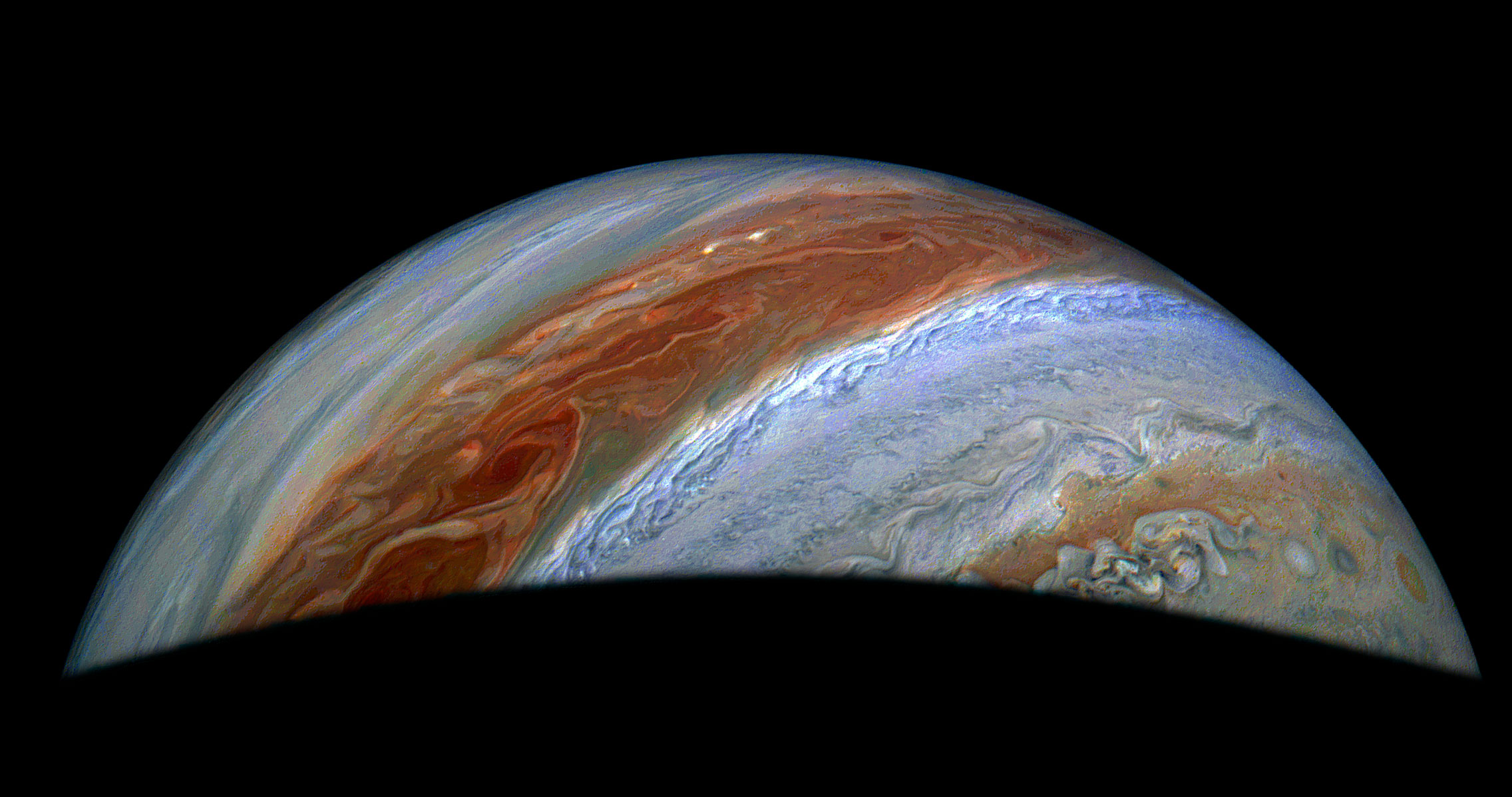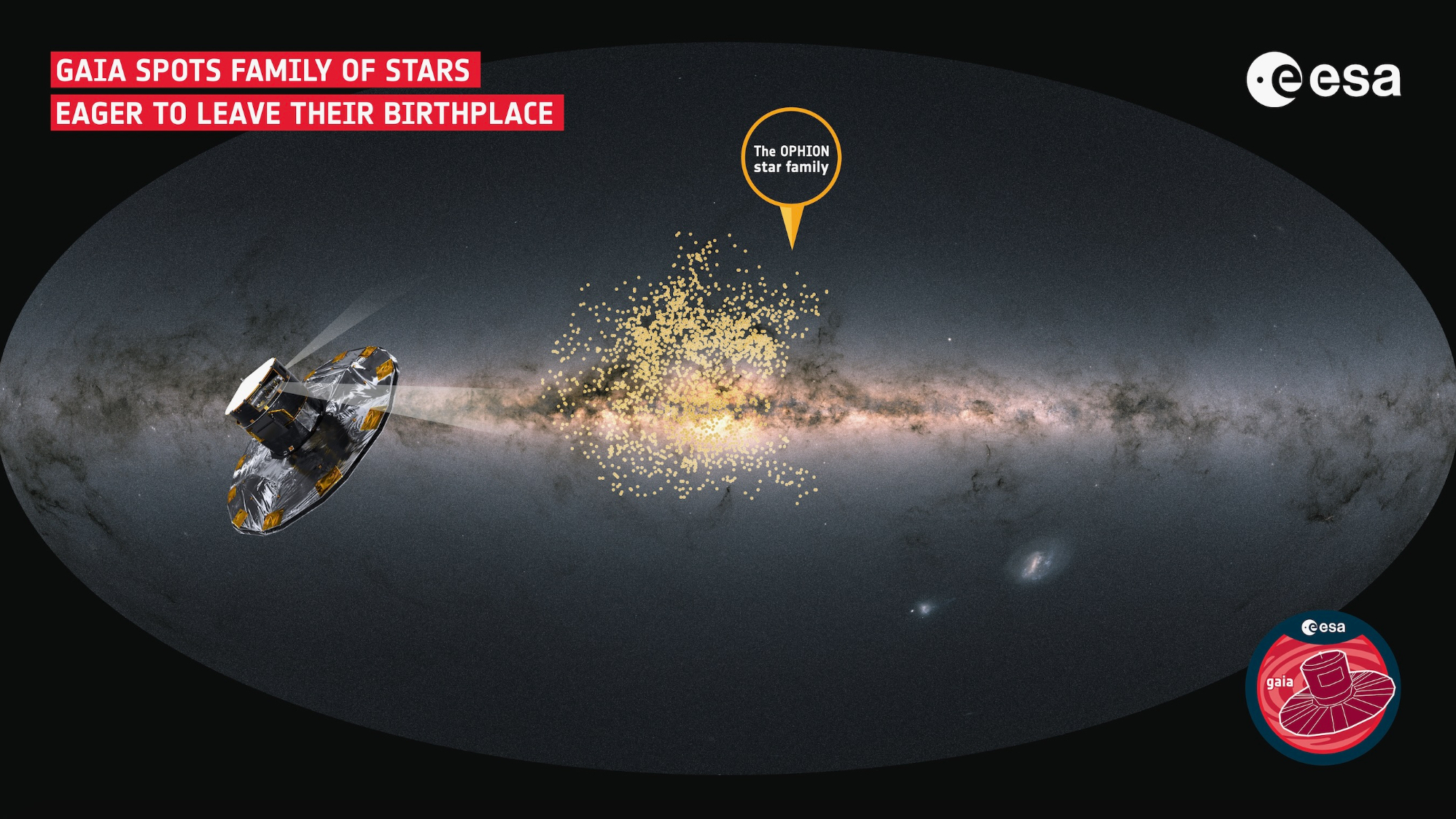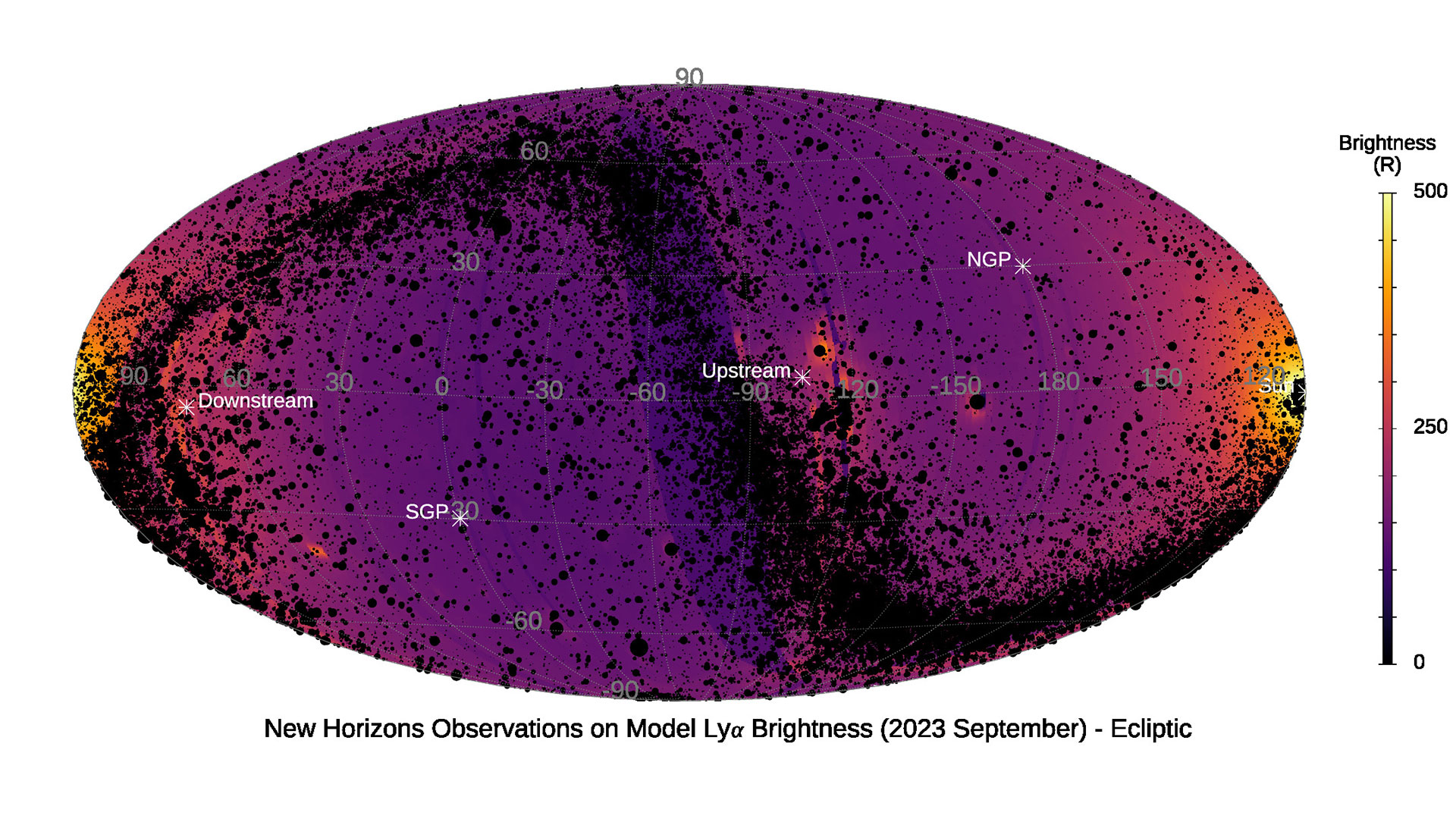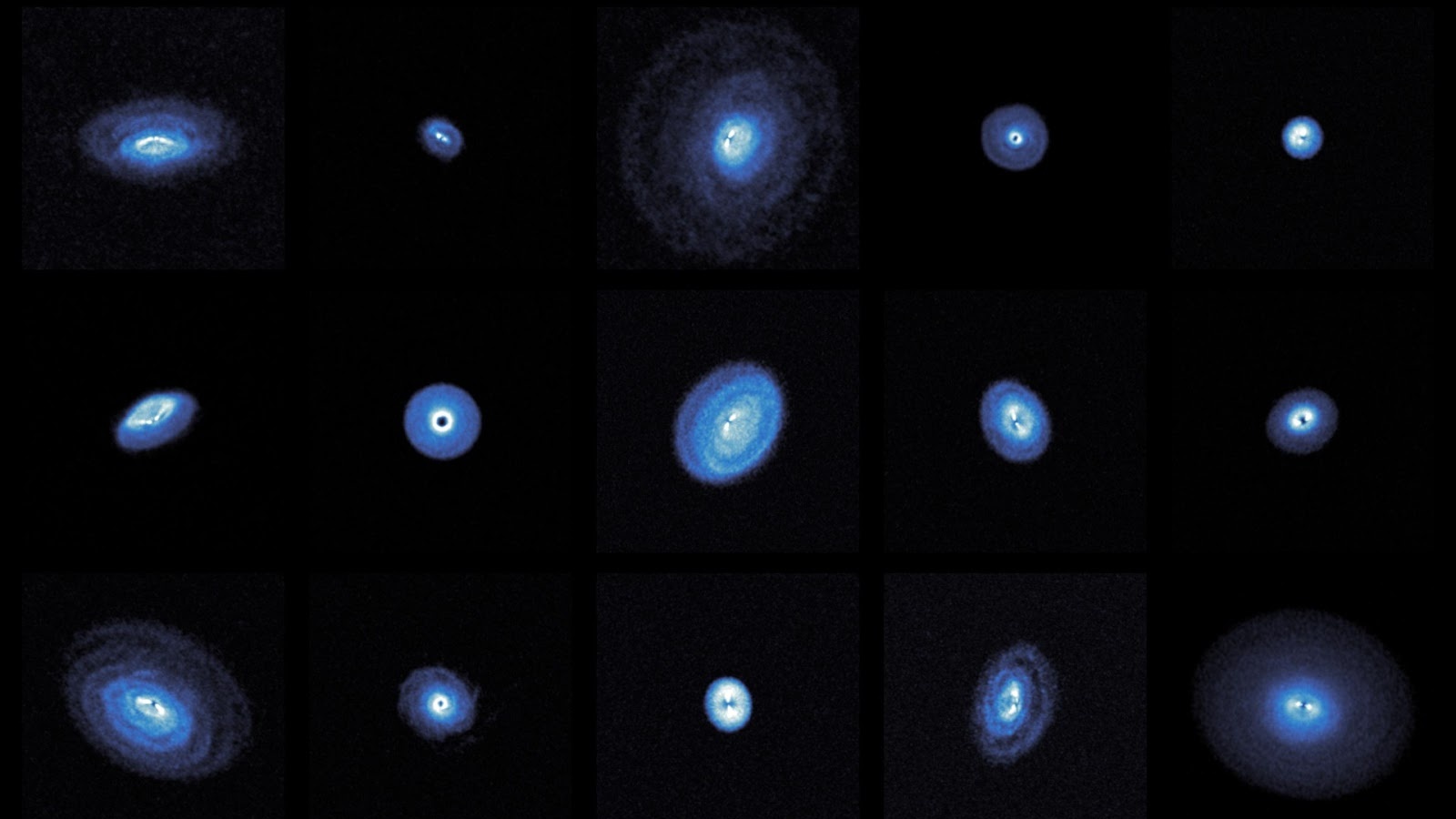Say Cheese! Hubble Telescope Sees Cosmic Smiley Face in Space
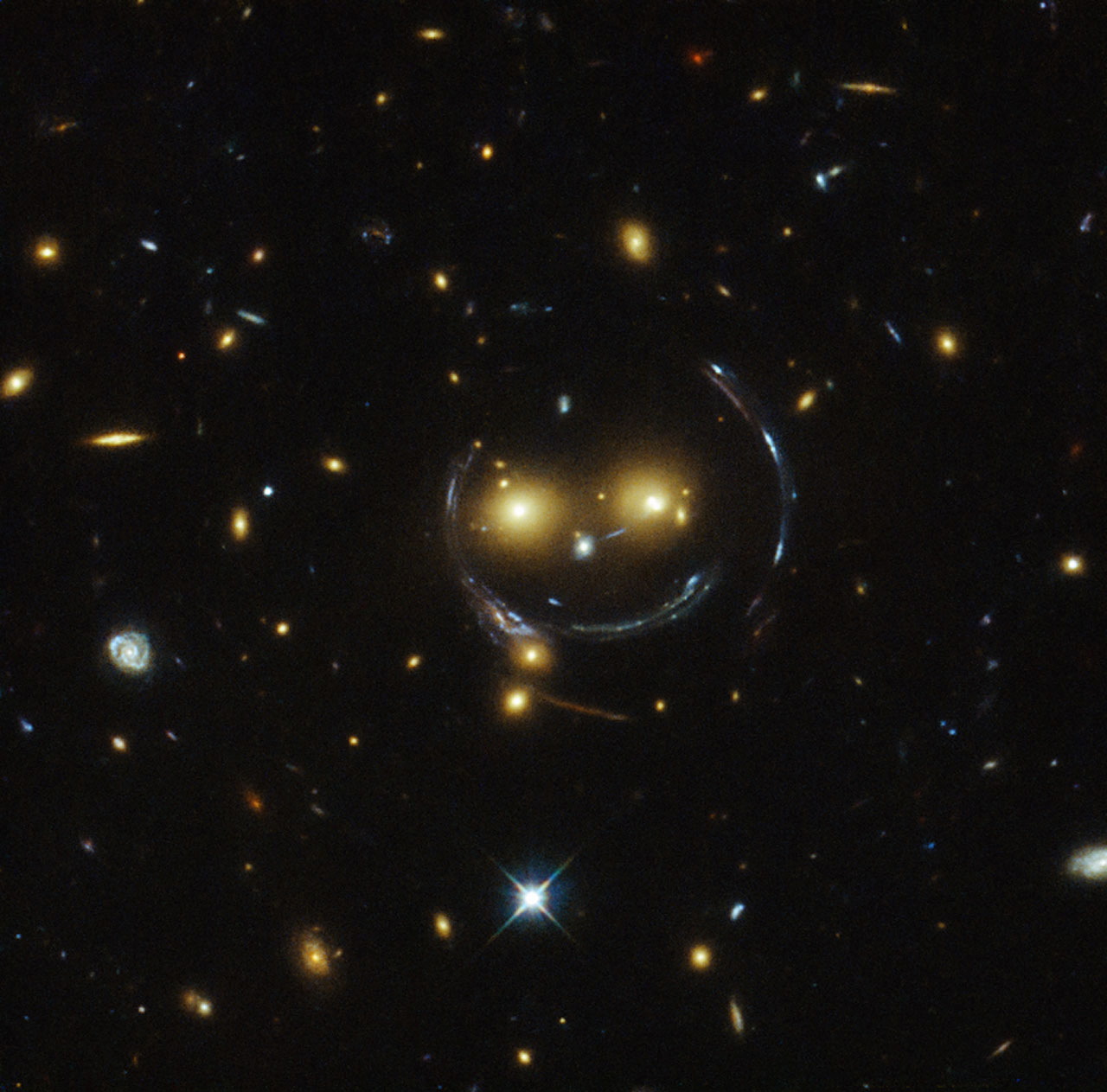
The universe is smiling today — at least, that's what it looks like in a new space photo that appears to feature a smiling face emerging from the light of the universe.
The Hubble Space Telescope snapped a shot of galaxy cluster SDSS J1038+4849 in which the cluster appears to be looking back. Two bright dots look like eyes, another like a nose, and curved lines of light create a mouth and the outline of a face. Altogether, they create the impression of a happy face in the galaxy cluster.
In reality, the two "eyes" are each a distant galaxy, and the curved lines come from light that has been bent by gravity around the galaxy cluster — an effect known as gravitational lensing.
Einstein's theory of general relativity showed that massive objects can actually bend the space around them. When light passes through this bent region of space, it can be redirected, magnified or distorted, as if it had passed through a lens.
Galaxy clusters are some of the most massive objects in the universe and can create strong gravitational lensing effects, according to a statement from the European Space Agency's Hubble collaboration.
In the case of the cosmic smiley face, the galaxy cluster and the distant light sources are perfectly aligned with Hubble along a straight line. As a result, Hubble sees what's called an Einstein Ring, in which the light from the more distant object is smeared out along a circular path. This creates the "smile" as well as the curve around the edge of the face.
Get the Space.com Newsletter
Breaking space news, the latest updates on rocket launches, skywatching events and more!
Astronomers sometimes look for signs of gravitational lensing in order to identify massive objects that might not be visible otherwise, including black holes, galaxy clusters and even dark matter.
Follow Calla Cofield @callacofield. Follow us @Spacedotcom, Facebook and Google+. Original article on Space.com.
Join our Space Forums to keep talking space on the latest missions, night sky and more! And if you have a news tip, correction or comment, let us know at: community@space.com.

Calla Cofield joined Space.com's crew in October 2014. She enjoys writing about black holes, exploding stars, ripples in space-time, science in comic books, and all the mysteries of the cosmos. Prior to joining Space.com Calla worked as a freelance writer, with her work appearing in APS News, Symmetry magazine, Scientific American, Nature News, Physics World, and others. From 2010 to 2014 she was a producer for The Physics Central Podcast. Previously, Calla worked at the American Museum of Natural History in New York City (hands down the best office building ever) and SLAC National Accelerator Laboratory in California. Calla studied physics at the University of Massachusetts, Amherst and is originally from Sandy, Utah. In 2018, Calla left Space.com to join NASA's Jet Propulsion Laboratory media team where she oversees astronomy, physics, exoplanets and the Cold Atom Lab mission. She has been underground at three of the largest particle accelerators in the world and would really like to know what the heck dark matter is. Contact Calla via: E-Mail – Twitter
